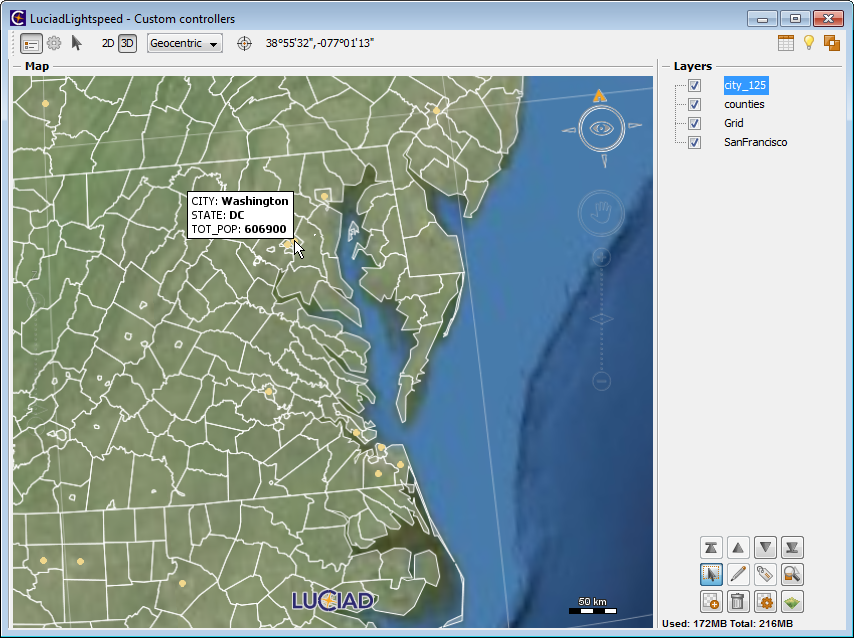The creation of a custom tooltip controller is demonstrated in the lightspeed.customization.controller sample. This controller shows an information panel when the mouse cursor hovers over an object.

lightspeed.customization.controller sample
The lightspeed.customization.controller sample applies the principle of controller chaining. For more information, see Controller chaining.
Program: Implementation of the custom tooltip controller shows how the tooltip controller is implemented in general, and the handleAWTEventImpl method in particular. On a mouse-moved or mouse-dragged event, the tooltip panel is either moved, unless the mouse cursor
does not touch any object. In that case, the tooltip panel is removed. A mouse-exited event removes the tooltip as well. No
events are consumed, because they may still be of use to other controllers. If a pan controller has been included in the chain,
for example, it will still receive mouse-dragged events.
samples/lightspeed/customization/controller/InformationPanelController)
@Override
public AWTEvent handleAWTEventImpl(AWTEvent aAWTEvent) {
// Handle mouse events only
if (aAWTEvent instanceof MouseEvent) {
MouseEvent event = (MouseEvent) aAWTEvent;
if (event.getID() == MouseEvent.MOUSE_MOVED || event.getID() == MouseEvent.MOUSE_DRAGGED) {
// move the information panel to the mouse cursor
movePanel(event.getX(), event.getY());
} else if (event.getID() == MouseEvent.MOUSE_EXITED) {
// remove the information panel if the mouse is outside the view
removePanel();
}
}
// Do not consume events, in order to make it possible for other controllers to use them.
return aAWTEvent;
}Note that coordinates obtained from an input event, a MouseEvent for example, are expressed in
so-called toolkit coordinates. If DPI scaling is enabled in the host operating system, toolkit
coordinates are different from Lightspeed view coordinates. When you are using the API to transform
points between, for instance, cursor positions and geographic coordinates, it is important
to be aware of this distinction.
ALspViewXYZWorldTransformation
provides the toolkitPoint2ViewSFCT, toolkitPoint2WorldSFCT, viewPoint2ToolkitSFCT and worldPoint2ToolkitSFCT
methods facilitate this.
Support high-resolution displays on a Lightspeed map provides
further information about DPI scaling.